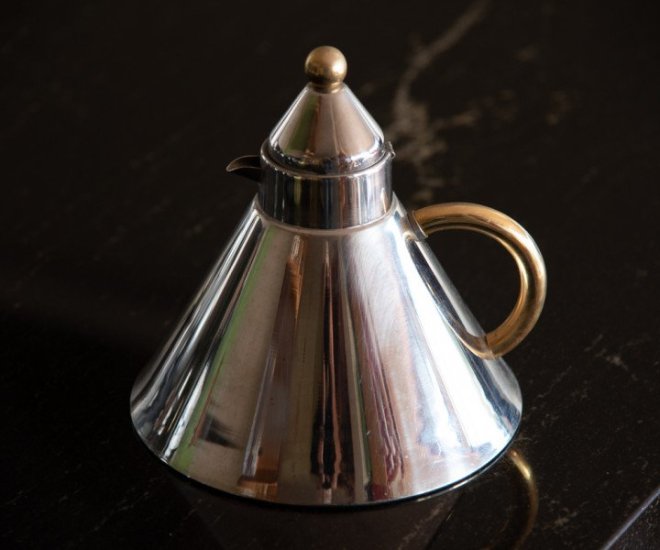This is a kettle. It is an Italian kettle and it is very stylish.

I have a number of teapots of different sizes for different tea blends and to use at different times of the day.

But I like to use a large tea pot in the morning, because that is when I have about three to four cups of tea while I grow into the morning and this is my largest.

My large teapots has a cracked sprout. It has been mended, but it may not last long.

My very classy Italian kettle is about thirty years old, but like my fellow Australians, I have been using an electric kettle for many years.

The Italian kettle is a beautiful object that sits on one of my shelves, but it wants to be used as well as admired.
When I was an Italian child growing up in Italy, my parents made tea in a little saucepan that was also used to be used to heat milk. Once the water boiled, tea was added to the boiling water and allowed to boil for a few minutes. The tea was then poured into cups through a dainty tea strainer. A slice of lemon was always added to the brew. Never milk. we called this Tè alla Russa . Now that I know how Russians make tea and the ritual that is followed, I know that my parents and their friends were making pretend Russian tea. I expect that like the rest of the world, most Russians now use tea bags.
Not me! I prefer a tea pot.

When my family came to Adelaide in South Australia, we continued to make tea by this method and used the same saucepan that we brought with us from Trieste. That is, until I began to visiting my Australian friends in their homes. They boiled water in different shaped saucepans with spouts! I went home and spread the news so we bought a kettle, boiled water in the kettle, added tea, boiled it some more, and then used the kettle as a teapot. Tè alla Russa once again. We thought we were so very with it!

This little memory prompted me to think about using my very attractive kettle as a tea pot. Not to boil tea in, but to use it as a conventional tea pot. Of course, there is the added advantage of being able to boil the water in the kettle-to-be-tea pot (or heating the water sufficiently for making green or white tea) and then making the tea. This would also do away with “warming” the tea pot before adding the tea.

Bingo! It works, but I shall have to use an oven mit for the handle.
I now shall need to sort out the accompanying, beautiful objects that sat on the same shelf.

My Italian relatives still seem to boil water for tea making in a saucepan. They use tea bags. Milk still seems unpopular, a slice of lemon is still preferred.
See:
Do I take making coffee at home too seriously?


